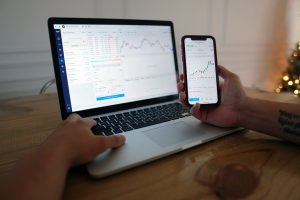Range trading is a popular forex trading strategy that involves identifying and trading within a defined price range. This approach is particularly useful when markets are stagnant or when traders want to avoid trading in volatile markets. In this article, we will provide an in-depth guide on how to trade range forex patterns.
What is a Range Forex Pattern?
A range forex pattern is a price pattern that occurs when a currency pair trades within a specific price range. The range is defined by two horizontal lines that act as support and resistance levels. The upper boundary is known as the resistance level while the lower boundary is known as the support level. When the price hits the resistance level, it tends to reverse and move towards the support level. Conversely, when the price hits the support level, it tends to reverse and move towards the resistance level.
How to Identify Range Forex Patterns
Identifying range forex patterns requires traders to be able to identify support and resistance levels. One way to do this is to look at historical price charts and identify areas where the market has previously reversed. Once the support and resistance levels have been identified, traders can draw horizontal lines to mark these levels. When the price moves between these levels, it is said to be trading within a range.
Another way to identify range forex patterns is to use technical indicators such as Bollinger Bands or Moving Averages. These indicators can help traders identify when a currency pair is trading within a range by providing signals when the price reaches the upper or lower boundaries.
How to Trade Range Forex Patterns
When trading range forex patterns, traders aim to buy at the support level and sell at the resistance level. The key to successful range trading is to identify the correct entry and exit points. Here are the steps to follow when trading range forex patterns:
Step 1: Identify the Support and Resistance Levels
Identify the support and resistance levels by drawing horizontal lines on the price chart. These levels should be based on historical price movements and should be significant enough to provide a strong barrier to price movement.
Step 2: Wait for the Price to Reach the Support Level
Once the support level has been identified, traders should wait for the price to reach this level before entering a trade. This is where traders aim to buy the currency pair.
Step 3: Place a Stop Loss Order
To manage risk, traders should place a stop loss order below the support level. This will limit losses if the price breaks below the support level and continues to fall.
Step 4: Wait for the Price to Reach the Resistance Level
Once the price reaches the resistance level, traders should be prepared to sell the currency pair. This is where traders aim to take profit.
Step 5: Place a Take Profit Order
To lock in profits, traders should place a take profit order at or near the resistance level. This will ensure that profits are realized if the price reverses and moves back towards the support level.
Step 6: Manage the Trade
Once the trade has been entered, traders should manage the trade by monitoring price movements and adjusting stop loss and take profit orders as necessary. Traders should also be prepared to exit the trade if the price breaks out of the range and trends in a new direction.
Conclusion
Range trading is a popular forex trading strategy that can be used to trade in stagnant markets. By identifying support and resistance levels, traders can enter trades at the support level and exit trades at the resistance level. The key to successful range trading is to identify the correct entry and exit points and to manage risk by placing stop loss and take profit orders. By following these steps, traders can increase their chances of success when trading range forex patterns.





